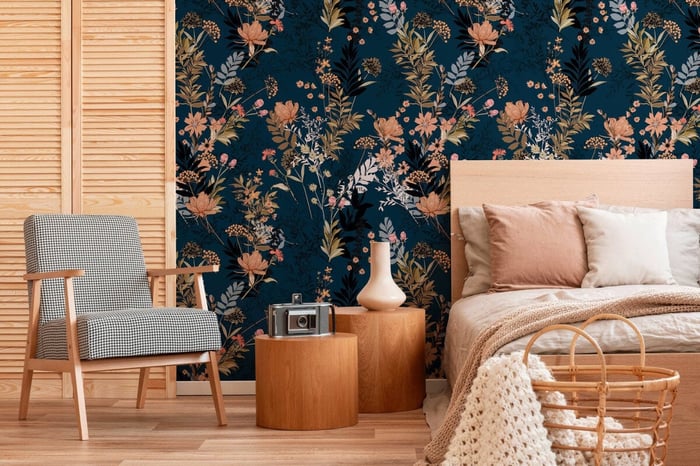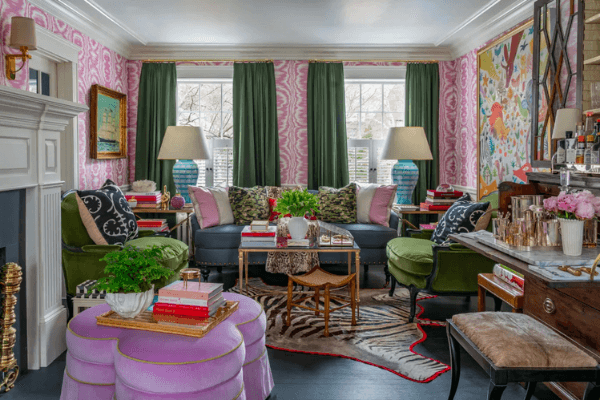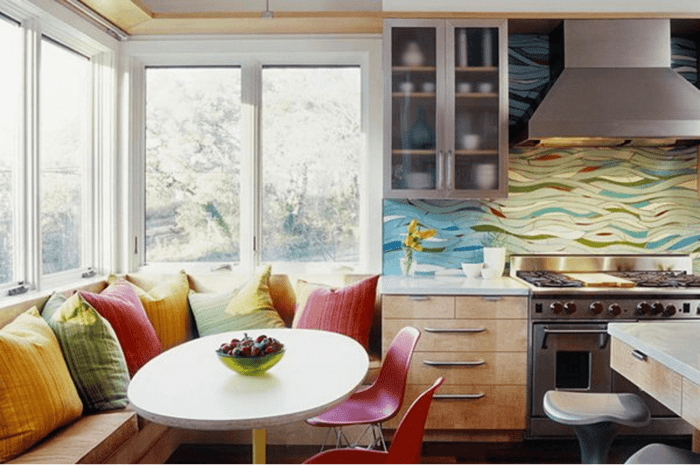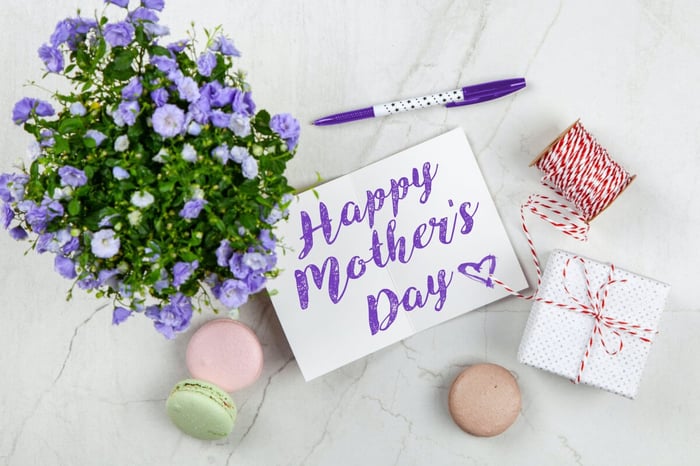Great Design Tips Using Floral Inspiration
Spring, the perfect time to bring a bit of floral whimsy into your home decor. While floral prints have a reputation as having a grandmother's look and feel, they can be an elegant addition to any contemporary space. Incorporating a flower patterned pillow, chair, piece of art, section of wall covering, or even throw carpet can be a classic inclusion that will last for the ages. There are a few tips to follow when starting to work with florals, understanding how pattern, color, and scale are strategically used to create a balanced effect. First, a little background.
HISTORY
Early Asia to the 20th Century: Floral Design in Decorating Over Time
Floral arrangements and use in decoration has been recorded back as far as B.C.E. in Asia when paper was invented. Soon after artists began painting the outdoors and hanging the paper wall coverings inside. The Egyptian period and every major historical period thereafter uses flowers as decoration, both adorning the human as well as the dwelling. The use of flowers ebbed and flowed with the times. From blossoming during the Renaissance in the 15th century when wallpaper made its way into Europe, then on to Victorian homes with floral prints on everything. The Romantics of the 19th century added floral arranging as an important part of a decorative scheme. Floral prints became especially popular in England, where they have remained a fixed feature of the traditional British aesthetic. When the Industrial Revolution hit in the 20th century, floral decoration became available to everyone as affordable vases, decorative containers and artificial flowers boomed.
20TH CENTURY- FLORAL DECOR
It wasn’t until the 20th century that we truly began to see floral patterns in interior design themes in America, that is other than wallpaper that was mentioned previously and used mainly to cover blemishes in a home rather than as a decorative element.
The 50’s
Flower prints exploded onto the scene in the 1950’s, displaying their patterns over drapery and upholstery. Revamping the Colonial era style of early America was trending and evolving for the present day.

The 60’s
With the 1960’s came a change of the floral decor style, from smaller more petite looks, to the larger are artistic depictions as seen in the sofa below. They adorned walls and furniture throughout the house. Another dimension in floral design also started: the stylistic daisy.


The 70’s
The pop art movement of the later 60’s inspired how flower representation was used in interior design in the 1970’s. The look evolved even further into less realistic expressions while the color scheme changed as well, focusing on yellow mustards, burnt oranges, and greens of an avocado flavor.

The 80’s
The retro theme to make a comeback in the late 1980’s interior design was a floral pattern craze, with matching flower patterns on everything. The excess of the’80s translated over to floral motifs where they were used very liberally in bedding, floral drapery, rugs, and floral wall coverings all in the same room. Cabbage roses and the color mauve dominated the 1980’s design trends. The ultra-feminine, English countryside look became mainstream with designer Laura Ashley leading the parade. She set the standard with subdued floral fabrics which morphed into a more affordable shabby chic period. These less expensive floral chintzes and refurbished flea market furniture finds were the staples of shabby chic or cottage style, which is once again popular today.

The 90’s
Here we see the popularity of the silk flower phenomenon as a decorating element hit new highs, with large, overstated arrangements taking center stage in many decor trends. Although track lighting and neon signs entered the mainstream futuristic look, flower and plant prints were included in '90s homes as well, most notably on walls. The shabby chic period was still going strong, bringing floral prints to bedding and bed skirts, to skirted tables, and wall art all included.
The 2000’s
The years of the early 2000’s were still holding onto the shabby chic look, with distressed white kitchens and softer shades of flower motifs used in decor accents. Most of the floral trends during these years were a combination of everything from decades past. No one floral style ruled.

The 2010’s
The change in floral prints took a 180 as we headed into the second half of the 2000’s. Dark photorealistic florals were introduced, displaying oversized flower themes, and almost Avant Garde color tones and arrangements. Scandinavian bold floral designs by Marimekko became trendy.

And the surrealist, colorful motifs took flowers to another level as designers like Josef Frank added birds, nature scenery, fruit, and more into their flower-based prints.

THE FUTURE
The floral trends of the future are evolving into art form, taking shape with further stylized designs. Rifle Paper Co. is a perfect example. Labeled ‘grandma shabby chic’, this is a style being embraced by the Millennial generation as they are honoring the tastes of their elders, the baby Boomers, who held onto their home decor style mainly from the 1950’s.

Another designer that sets the tone for the future of home floral decor is Ted Baker. Initially starting in fashion, he moved into home decorating with the same eclectic tastes of his clothing lines. From bedding to rugs, to other home accents, Ted Baker’s style is bold going for strong statement flower pieces that bring bright color to any room.

FLORAL DECORATING TIPS
Pattern
The abundance of floral patterns in the home decorating world can be truly overwhelming. To immediately narrow it down there are two ways to approach this. Go either big and bold with a floral statement piece or choose a smaller, more delicate pattern to use in accent pieces. Big and bold could mean an accent wall with flower inspired wall paper while the rest of the room is painted in solid colors to balance the look. If you prefer a smaller flower pattern, to keep it modern, lean towards more abstract prints; this holds true for the big and bold as well. Smaller prints are for accents- throw pillows, area rugs, or a bit of trim around a doorway.
Color
Flowers are colorful; that’s one of their major selling points. To keep your floral look modern, balance out colorful prints with more neutral tones in the rest of the space. Combining florals with neutral tones will also impart a more modern sensibility. The opposite end of the spectrum is your other choice. The classic look of black and white flower prints, or shades of gray against ivory backgrounds, paired with a contemporary home design will create a look with florals that brings you into the future.
Scale
Another tip when decorating your modern home with floral elements is to remember the aspect of scale. In a bedroom for instance, if you’ve chosen a floral duvet, that is a large scale print. To maintain an up-to-date look, no additional floral accents are needed. Better to design the rest of the room in solid colors. The same tip follows for any room in the house as well. Smaller scale floral choices can be used more liberally around a space. Just remember to incorporate the other tips of pattern and color to keep it fresh.
Texture
If your home design is sleek, modern, or stylized with clean lines, a way to add visual texture with your florals is with neutral colored patterns. Even neutral colored walls with a neutral colored flower theme will bring another dimension to the room. Bolder flower prints are composed of texture in and of themselves, thus when pairing them with other textured elements in your home the outcome is striking. Think headboards, throw pillows with fringe, and accent walls.
Ultimately unsure if your floral choice is modern? If it makes you happy and creates a joyful environment in your home, it’s the right choice.
#floraldecor #decor #flowers #floraldesign #floral #homedecor #eventplanner #floralart #eventdecor #flowerdecor #florist #floralinspiration #interiordesign #home #interior #decor #design #homedesign #handmade #homesweethome #art #decoration #furniture #interiors #homedecoration #vintage #interiordesigner #interiordecor #walldecor #homestyle #diy #livingroom #interiorstyling #inspiration #shabbychic








